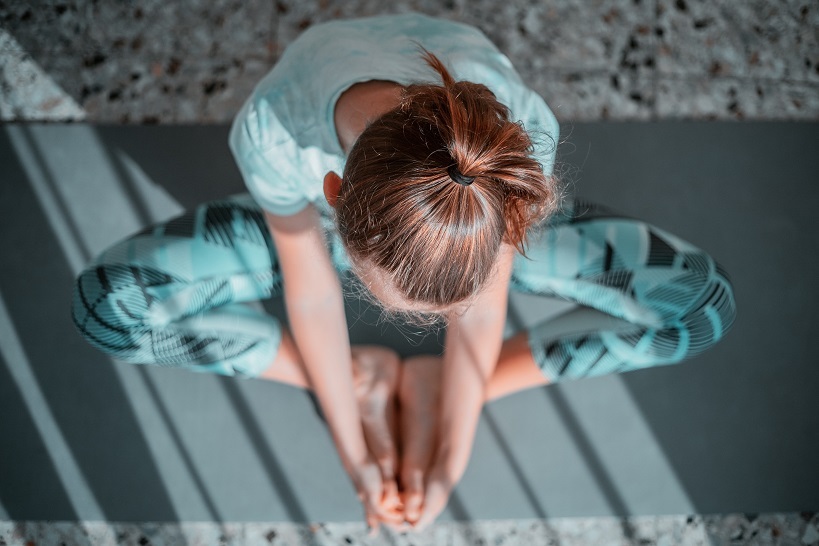New Report: Exercise Plays Key Role in Mental Health & Well-being
Current evidence suggests physical activity and exercise benefit mental health. In June 2021, the John W. Brick Foundation released their Move Your Mental Health Report, a scoping review of studies conducted over the last thirty years. This article outlines the key findings of the report and what this data means for fitness industry professionals.
As the world continues to slowly emerge from the COVID-19 pandemic, the long-term impacts of the last 18 months on physical and mental health are yet to be determined. Some mental health experts fear a “tsunami” of mental health issues to emerge in the near future. Investment in strategies to improve and address mental health has never been more prescient.
There has long been data to suggest physical activity and exercise benefit mental health. In June 2021, the John W. Brick Foundation released their Move Your Mental Health Report, which provides a scoping review of over 1,000 studies conducted over the last thirty years. The research cast a wide net, including studies on any variety of physical activity, exercise, or movement type and any mental health outcome published between 1990 and 2020.
The findings were overwhelmingly positive. Out of 1,158 studies examined, 89% found a statistically significant, positive association between physical activity or exercise and mental health. The top three exercise types linked to mental health benefits were:
general physical activity (a broad category representing any movement),
cardiovascular/aerobic physical activity, and
yoga.

When considering solely randomized controlled trials (RCTs)—often thought of as the gold standard and most rigorous study type—87% found statistically significant positive associations between physical activity or exercise and mental health.
Exercise and Mental Health
This review found statistically significant and beneficial links between several types of physical activity and depression, general anxiety, mood, general mental health, quality of life, stress, and well-being.
The strongest associations across the board were for depression. A review cited in the report and published in the Journal of the American Medical Association, including 39 trials, found that exercise was associated with reduced depression symptoms when compared with no treatment and placebo and active control groups. Additional studies found that the effects of exercise were not different from psychotherapy or antidepressants.
Research also suggests exercise is beneficial for anxiety. Meta-analyses of studies have shown that exercise is more effective in treating anxiety than control group settings. Exercise improved anxiety symptoms in people with an anxiety diagnosis or other stress-related disorder and those with “clinically raised” anxiety. A growing body of evidence suggests physical activity can provide immediate anxiety relief following a session. The evidence shows that exercise can be a long-term solution and also a potential immediate coping mechanism for people with anxiety.
The evidence thus far suggests an effective exercise regimen for depression and anxiety includes both aerobic and resistance training across four to five 30-45 minute sessions each week. Exercise should also be supervised by a trained fitness professional and be mindful of participants’ enjoyment, community, and culture to maximize adherence. People with anxiety also benefit from adding more mindful forms of exercise like yoga, Tai Chi, and Qigong one or two times per week.

Exercise and Mental Illness
While exercise cannot cure mental illness, it can still provide important benefits to overall well-being.
For example, the report highlights evidence suggesting aerobic exercise can lower psychiatric symptoms and improve cognition in people with schizophrenia type disorders. A study including 39 trials found that physical activity interventions had a significant effect on lower depression symptoms and schizophrenia symptoms. Interventions also improved quality of life in people with mental illness.
The report also points to a 19 study meta-analysis, which found that yoga was better for depressive symptoms in contrast to no treatment or treatment as usual for people with:
depression,
post-traumatic stress,
schizophrenia,
anxiety,
alcohol use, and
bipolar disorder.
In this analysis, the authors noted a link between a higher frequency of yoga and a greater reduction in symptoms.
Less evidence was available for serious mental illnesses like bipolar disorder and schizophrenia. Although, research suggests that physical activity is more beneficial for controlling “negative” symptoms—such as withdrawal and apathy—than for “positive” symptoms—as in hallucinations or confused thoughts. Another added benefit of physical activity for people with serious mental illness is its role in preventing and managing cardiometabolic diseases, which can often accompany these illnesses, increase disease risk, and reduce longevity.

Key Recommendations
According to the report, the benefits of exercise and physical activity for mental health are most apparent when:
intensity is moderate to vigorous,
it occurs several times per week,
engaging in a combination of aerobic and resistance training, and
it includes mindfulness-based activities like yoga, Tai Chi, and Qigong.
It’s important to remember that more is not always best. The evidence suggests a U-shaped curve, with peak benefits at a regimen of moderate-vigorous exercise three to five times weekly. In alignment with global and U.S. physical activity guidelines recommendations, combining cardiovascular training with resistance or muscular strengthening exercise was more beneficial than either one alone.

Alexandra Black Larcom, MPH, RD, LDN, previously served as IHRSA's Senior Manager of Health Promotion & Health Policy—a position dedicated to creating resources and projects to help IHRSA members offer effective health programs, and promoting policies that advance the industry.